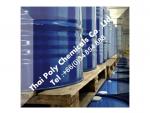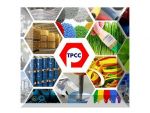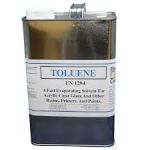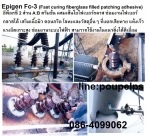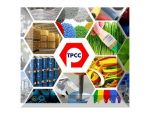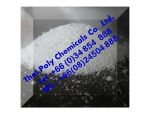คาร์โบแวกซ์ CARBOWAX PEG200 PEG300 PEG400 PEG600 |
฿1 |
|
ชื่อผู้ประกาศ : Thailandchemicals เบอร์โทรศัพท์ : 034854888, 034496284 โทรศัพท์มือถือ : 0824504888, 0800160016 ที่อยู่ : 36/5 ม.9 ต.นาดี อ.เมืองสมุทรสาคร ร้าน Thailand Chemicals |
โพลีอีเทอร์ไกลคอล,
โพลีเอทิลีนไกลคอล, Polyether Glycol, PolyethyleneGlycol, PEGคาร์โบแวกซ์, CARBOWAX, PEG 100, PEG 200, PEG 300, PEG 400,
PEG 600, PEG 1000Polyethylene glycol (PEG) is a
polyether compound with many applications from industrial manufacturing to
medicine. It has also been known as polyethylene oxide (PEO) or polyoxyethylene
(POE), depending on its molecular weight, and under the tradename Carbowax.
PEG, PEO, or POE refers to an oligomer or polymer of ethylene oxide. The three
names are chemically synonymous, but historically PEG has tended to refer to
oligomers and polymers with a molecular mass below 20,000 g/mol, PEO to
polymers with a molecular mass above 20,000 g/mol, and POE to a polymer of any
molecular mass.[2] PEG and PEO are liquids or low-melting solids, depending on
their molecular weights. PEGs are prepared by polymerization of ethylene oxide
and are commercially available over a wide range of molecular weights from 300
g/mol to 10,000,000 g/mol. While PEG and PEO with different molecular weights
find use in different applications and have different physical properties
(e.g., viscosity) due to chain length effects, their chemical properties are
nearly identical. Different forms of PEG are also available dependent on the
initiator used for the polymerization process, the most common of which is a
monofunctional methyl ether PEG (methoxypoly(ethylene glycol)), abbreviated
mPEG. Lower-molecular-weight PEGs are also available as purer oligomers,
referred to as monodisperse, uniform or discrete. Very high purity PEG has
recently been shown to be crystalline, allowing determination of an xray
crystal structure.[3] Since purification and separation of pure oligomers is
difficult, the price for this type of quality is often 10-1000 fold that of
polydisperse PEG. PEGs are also available with different geometries. Branched
PEGs have three to ten PEG chains emanating from a central core group. Star
PEGs have 10?100 PEG chains emanating from a central core group. Comb PEGs have
multiple PEG chains normally grafted to a polymer backbone. Their melting
points vary depending on the Formula Weight of the polymer. PEG or PEO has the
following structure. The numbers that are often included in the names of PEGs
indicate their average molecular weights, e.g., a PEG with n=9 would have an
average molecular weight of approximately 400 daltons and would be labeled PEG
400. Most PEGs include molecules with a distribution of molecular weights;
i.e., they are polydisperse. The size distribution can be characterized
statistically by its weight average molecular weight (Mw) and its number
average molecular weight (Mn), the ratio of which is called the polydispersity
index (Mw/Mn). Mw and Mn can be measured by mass spectrometry.Polyethylene glycol (PEG) is a
polyether compound with many applications from industrial manufacturing to
medicine. The structure of PEG is (note the repeated element in parentheses): H-(O-CH2-CH2)n-OHPEG is also known as polyethylene
oxide (PEO) or polyoxyethylene (POE), depending on its molecular weight.Production
Polyethylene glycol is produced by
the interaction of ethylene oxide with water, ethylene glycol, or ethylene
glycol oligomers.[5] The reaction is catalyzed by acidic or basic catalysts.
Ethylene glycol and its oligomers are preferable as a starting material instead
of water, because they allow the creation of polymers with a low polydispersity
(narrow molecular weight distribution). Polymer chain length depends on the
ratio of reactants. HOCH2CH2OH + n(CH2CH2O) ? HO(CH2CH2O)n+1H
Depending on the catalyst type,
the mechanism of polymerization can be cationic or anionic. The anionic
mechanism is preferable because it allows one to obtain PEG with a low
polydispersity. Polymerization of ethylene oxide is an exothermic process.
Overheating or contaminating ethylene oxide with catalysts such as alkalis or
metal oxides can lead to runaway polymerization, which can end in an explosion
after a few hours.Polyethylene oxide, or
high-molecular weight polyethylene glycol, is synthesized by suspension
polymerization. It is necessary to hold the growing polymer chain in solution
in the course of the polycondensation process. The reaction is catalyzed by
magnesium-, aluminium-, or calcium-organoelement compounds. To prevent
coagulation of polymer chains from solution, chelating additives such as
dimethylglyoxime are used.Alkali catalysts such as sodium
hydroxide (NaOH), potassium hydroxide (KOH), or sodium carbonate (Na2CO3) are
used to prepare low-molecular-weight polyethylene glycol.Medical uses
PEG is the basis of a number of
laxatives (e.g., macrogol-containing products, such as Movicol and polyethylene
glycol 3350, or SoftLax, MiraLAX,ClearLAX, or GlycoLax). Whole bowel irrigation
with polyethylene glycol and added electrolytes is used for bowel preparation
before surgery or colonoscopy. The preparation is sold under the brand names
GoLYTELY, GaviLyte C, NuLytely, GlycoLax, Fortrans, TriLyte, Colyte,
Halflytely, Softlax, Lax-a-Day, ClearLax and MoviPrep. In the United States,
MiraLAX and Dulcolax Balance are sold without prescription for short-term
relief of chronic constipation. Miralax is currently FDA approved for adults
for a period of seven days, and is not approved for children. A 2007 comparison showed that patients
suffering from constipation had a better response to PEG medications than to
tegaserod. These medications soften the fecal mass by osmotically drawing water
into the GI tract. It is generally well tolerated, however, side effects are
possible bloating, nausea, gas, and diarrhea (with excessive use).When attached to various protein
medications, polyethylene glycol allows a slowed clearance of the carried
protein from the blood. This makes for a longer-acting medicinal effect and
reduces toxicity, and allows longer dosing intervals. Examples include
PEG-interferon alpha, which is used to treat hepatitis C, and PEGfilgrastim
(Neulasta), which is used to treat neutropenia. It has been shown that
polyethylene glycol can improve healing of spinal injuries in dogs. One of the
earlier findings, that polyethylene glycol can aid in nerve repair, came from
the University of Texas (Krause and Bittner). Polyethylene glycol is also
commonly used to fuse B-cells with myeloma cells in monoclonal antibody
production. PEG is used as an excipient in many pharmaceutical products.
Lower-molecular-weight variants are used as solvents in oral liquids and soft
capsules, whereas solid variants are used as ointment bases, tablet binders, film
coatings, and lubricants.PEG is also used in lubricating
eye drops.Research for new clinical uses
PEG, when labeled with a near-infrared
fluorophore, has been used in preclinical work as a vascular agent, lymphatic
agent, and general tumor-imaging agent by exploiting the Enhanced permeability
and retention effect (EPR) of tumors. High-molecular-weight PEG (e.g. PEG 8000)
has been shown to be a dietary preventive agent against colorectal cancer in
animal models. The Chemoprevention Database shows PEG is the most effective
known agent for the suppression of chemical carcinogenesis in rats. Cancer
prevention applications in humans, however, have not yet been tested in
clinical trials. The injection of PEG 2000 into the bloodstream of guinea pigs
after spinal cord injury leads to rapid recovery through molecular repair of
nerve membranes. The effectiveness of this treatment to prevent paraplegia in
humans after an accident is not known yet. PEG is being used in the repair of motor
neurons damaged in crush or laceration incidents in vivo and in vitro. When
coupled with melatonin, 75% of damaged sciatic nerves were rendered viable.Chemical uses
Polyethylene glycol has a low toxicity and is
used in a variety of products. The polymer is used as a lubricating coating for
various surfaces in aqueous and non-aqueous environments. Since PEG is a
flexible, water-soluble polymer, it can be used to create very high osmotic
pressures (on the order of tens of atmospheres). It also is unlikely to have
specific interactions with biological chemicals. These properties make PEG one
of the most useful molecules for applying osmotic pressure in biochemistry and
biomembranes experiments, in particular when using the osmotic stress
technique. Polyethylene glycol is also commonly used as a polar stationary
phase for gas chromatography, as well as a heat transfer fluid in electronic
testers.PEO (polyethylene oxide) can serve
as the separator and electrolyte solvent in lithium polymer cells. Its low
diffusivity often requires high temperatures of operation, but its high
viscosity ? even near its melting point ? allows very thin electrolyte layers
to be created. While crystallization of the polymer can degrade performance,
many of the salts used to carry charge can also serve as a kinetic barrier to
the formation of crystals. Such batteries carry greater energy for their weight
than other lithium ion battery technologies.PEG has also been used to preserve objects
that have been salvaged from underwater, as was the case with the warship Vasa
in Stockholm,[18] the Mary Rose in England and the Ma'agan Michael Ship in
Israel. It replaces water in wooden objects, making the wood dimensionally
stable and preventing warping or shrinking of the wood when it dries. In
addition, PEG is used when working with green wood as a stabilizer, and to
prevent shrinkage. PEG is often used (as an internal calibration compound) in
mass spectrometry experiments, with its characteristic fragmentation pattern
allowing accurate and reproducible tuning.PEG derivatives, such as narrow
range ethoxylates, are used as surfactants.PEG has been used as the
hydrophilic block of amphiphilic block copolymers used to create some
polymersomes.Biological uses
PEG is commonly used as a precipitant for
plasmid DNA isolation and protein crystallization. X-ray diffraction of protein
crystals can reveal the atomic structure of the proteins. Polymer segments
derived from PEG polyols impart flexibility to polyurethanes for applications
such as elastomeric fibers (spandex) and foam cushions. In microbiology, PEG
precipitation is used to concentrate viruses. PEG is also used to induce
complete fusion (mixing of both inner and outer leaflets) in liposomes
reconstituted in vitro. Gene therapy vectors (such as viruses) can be
PEG-coated to shield them from inactivation by the immune system and to
de-target them from organs where they may build up and have a toxic effect. The
size of the PEG polymer has been shown to be important, with larger polymers
achieving the best immune protection.PEG is a component of stable nucleic acid
lipid particles (SNALPs) used to package siRNA for use in vivo. In blood
banking, PEG is used as a potentiator to enhance detection of antigens and
antibodies. When working with phenol in
a laboratory situation, PEG 300 can be used on phenol skin burns to deactivate
any residual phenol.Commercial uses
PEG is the basis of many skin creams (as
cetomacrogol) and personal lubricants (frequently combined with glycerin). PEG
is used in a number of toothpastes as a dispersant. In this application, it
binds water and helps keep xanthan gum uniformly distributed throughout the
toothpaste. PEG is also under investigation for use in body armor, and in tattoos
to monitor diabetes. In low-molecular-weight formulations (i.e. PEG 400), it is
used in Hewlett-Packard designjet printers as an ink solvent and lubricant for
the print heads. PEG is also one of the main ingredients in paintball fills, due
to its thickness and flexibility. However, as early as 2006, some Paintball
manufacturers began substituting cheaper oil-based alternatives for
PEG.[citation needed]PEG is a major ingredient in e-liquid, used in
electronic cigarettes. It is generally used as a 30%?50% proportion of the
liquid that is vaporized. Its use is designed to give a smoother effect to the
vaporizing action. PEG is also used as an anti-foaming agent in food ? its INS
number is 1521 or E1521 in the EU.Industrial uses
Nitrate ester-plasticized polyethylene glycol
is used in Trident II ballistic missile solid rocket fuel. Dimethyl ethers of
PEG are the key ingredient of Selexol, a solvent used by coal-burning,
integrated gasification combined cycle (IGCC) power plants to remove carbon
dioxide and hydrogen sulfide from the gas waste stream. PEG has been used as
the gate insulator in an electric double-layer transistor to induce superconductivity
in an insulator. PEG is also used as a polymer host for solid polymer
electrolytes. Although not yet in commercial production, many groups around the
globe are engaged in research on solid polymer electrolytes involving PEG, with
the aim of improving their properties, and in permitting their use in
batteries, electro-chromic display systems, and other products in the future. PEG
is used as a binder in the preparation of technical ceramics.Choose from CARBOWAX? PEGs in a
variety of molecular weights, viscosities and in several physical forms. Each product grade is designated numerically by its average molecular weight. For example, CARBOWAX? PEG 600 consists of a distribution of polymers of varying molecular weights with an average of 600. Molecular weight has an effect on the physical properties of each product grade. Increased molecular weight results in decreased solubility in water and solvents, decreased hygroscopicity and
CARBOWAX? SENTRY? PEGs are
available in average molecular weights ranging from 300 to 8000 in a variety of viscosities and physical forms. CARBOWAX? SENTRY? PEGs meet all applicable requirements in the National Formulary (NF) for use in drug applications, Food Chemicals Codex (FCC) requirements for use in certain food applications and
สอบถามข้อมูลเพิ่มเติมได้ที่
ฝ่ายขายThai Poly Chemicals Co., Ltd.
บริษัท ไทยโพลีเคมิคอล จำกัด
ที่อยู่36/5 ม.9 แขวง/ตำบลนาดี
เขต/อำเภอเมืองสมุทรสาคร
จังหวัดสมุทรสาคร รหัสไปรษณีย์74000Tel.: 034854888,
034496284
Fax.: 034854899,
034496285
Mobile: 0824504888,
0800160016
Website :
www.thaipolychemicals.comEmail1 : thaipolychemicals@hotmail.com
Email2 : info@thaipolychemicals.com
PolyetherโพลีเอทิลีนไกลคอลPEGPolyethyleneคาร์โบแว็กซ์โพลีอีเธอร์ไกลคอลglycolคาร์โบแวกซ์โพลีอีเทอร์ไกลคอลโพลีเอทธิลีนไกลคอล

